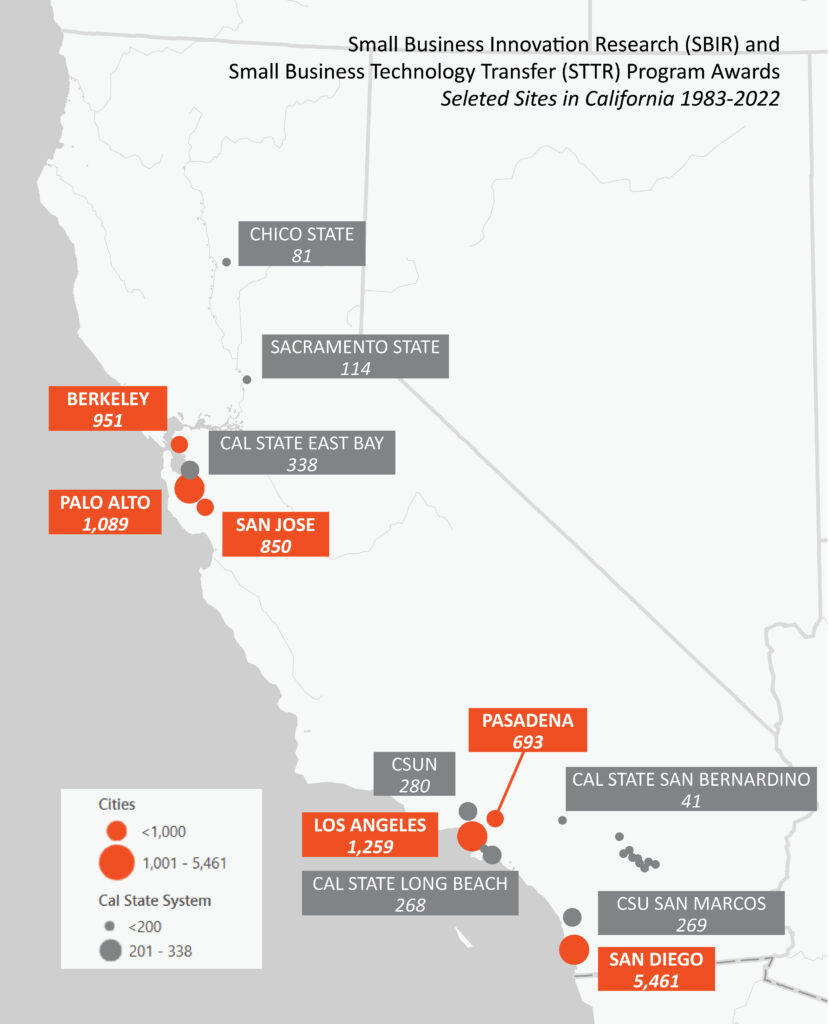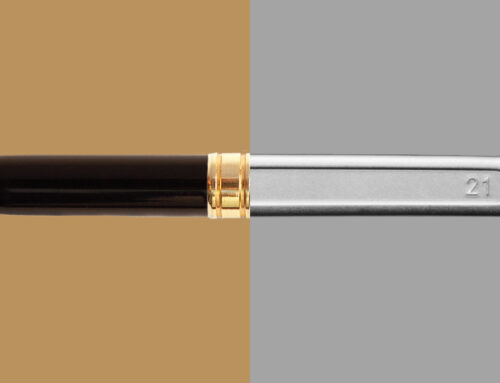Innovation is a key tenet of CVEP’s mission. Here in the US, innovation is rewarded in myriad ways. One example for small businesses and entrepreneurs is America’s Seed Fund. This program awards grants of up to $1M through two specific programs. Small Business Innovation Research (SBIR) grants enable small businesses to “explore their technological potential and provide the incentive to profit from its commercialization.” Small Business Technology Transfer (STTR) grants additionally require partnerships between small businesses and nonprofit research institutions (e.g., nonprofit colleges or universities, domestic nonprofit research organizations, and federally funded R&D centers). These help “bridge the gap between performance of basic science and commercialization of resulting innovations.” Today we will look at the distribution of these awards in California.
The map of California below shows a selection of sites with total America’s Seed Fund grants awarded since 1983. Not surprisingly, California leads the way in total awards (40,168) and dollars awarded ($13.1m). Massachusetts (25,209 awards), Virginia (11,499), Maryland (9,483), and Colorado (8,681) round out the top five in the US.
Most awards in California center around the three largest urban areas: The Bay Area, Greater Los Angeles, and San Diego. Not surprisingly, these are also locations of world-renowned research universities like Stanford University and UC San Diego. The orange points symbolize these areas and are labeled with the total grants awarded since 1983.
Outside of the major urban centers, we find that higher numbers of awards correlate to the presence of a Cal State University campus. For example, Chico State is in a more remote, rural part of the state, but still has produced 81 awards. As discussed, these grants encourage partnership with non-profit research organizations, with the STTR program requiring it.
So how many businesses in the Coachella Valley have been awarded America Seed Fund grants? Six total in the last 39 years. Approximately $2.4 million has been distributed in 7 grants: Palm Springs (4 grants), Palm Desert (2 grants), and Rancho Mirage (1 grant). Topics include gray waste technology for navy ships, Alzheimer’s research, older adult substance abuse research, submarine rescue technology, and traumatic brain injury research.
Imagine over these last 39 years if we had had a thriving 4-year STEM university? Chico, with 81 grants, has a population of 98,700 and is in the Redding-Red Bluff micropolitan statistical area with a population of 250,000, nearly half the population of the Coachella Valley. Where would we stand in those rankings? The Coachella Valley is California’s largest urban area without the support of a comprehensive 4-year university. No wonder this one indicator of technology transfer and innovation is so low for our valley.









